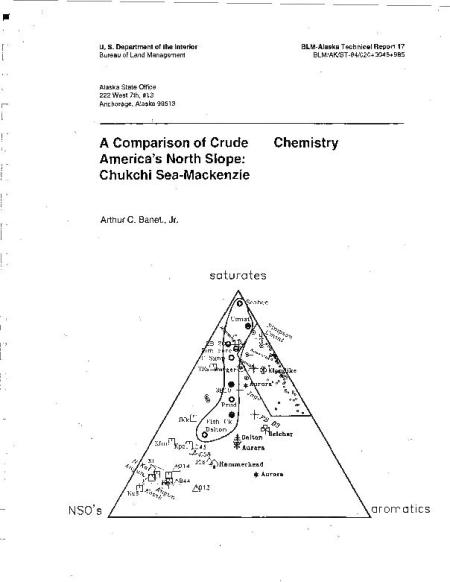A Comparison of Crude Oil Chemistry on America’s North Slope: Chukchi Sea-Mackenzie Delta

Publicly available geochemical data provide the basis for correlating and comparing the major North Slope oil types. These data define ten oil types representing independent petroleum systems. This analysis concurs with earlier work that identifies the major and chemically-distinctive oil types germane to the North Slope.
Prudhoe type oils are shown to extend to immediately west of the Arctic National Wildlife Refuge 1002 area. Also, comparisons of the geochemical data show that considerable mixing of the Prudhoe and Umiat oil types has occurred in reservoirs along the Barrow Arch. Data from the most recent onshore discoveries fit within the Prudhoe or mixed oil site chemistry. Biological marker analysis of the ANWR 1002 area oils show that there are three types. The Jago-Katakturuk-Manning Pt. type correlates with Mackenzie Type A oils. These oils are derived from the upper Cretaceous Bentonitic, the richest source rock on the North Slope! The Angun Pt. oil is of marine origin and likely derived from multiple sources. The Kavik oil stain is unique. Biomarker data indicate that some non-marine Mackenzie type C2 oils have migrated into reservoirs which typically yield type C1 oils.
These geochemical data also show that oils from two wells in the Chukchi Sea represent a newly described and independent petroleum system. The multi-faceted chemistry of the Hammerhead oil shows it is the most unique and enigmatic type on the North Slope. It represents another independent petroleum system. Additional data are required to determine how and to what extent the major Kuvlum discovery best correlates to the Prudhoe, Hammerhead, Mackenzie Delta or ANWR suites.
